Self-leveling mixtures for the floor: what are the subtleties of application for?
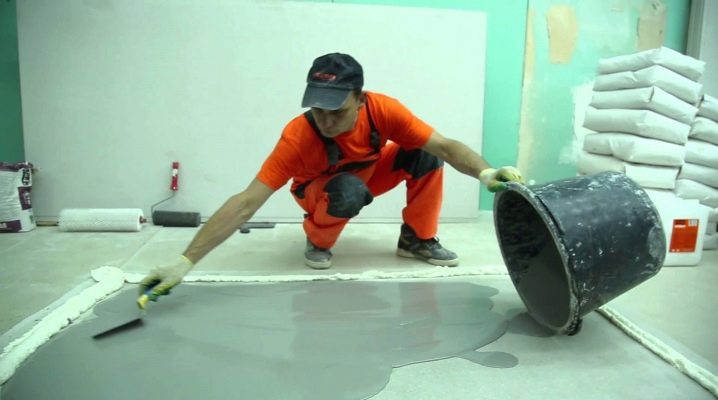
When building or renovating a house, apartment or any premises, equipping a high-quality floor is one of the key stages. The finishing decorative coating makes it beautiful, the reinforcement and the screed layer give it reliability, and the heat insulation or the underfloor heating system is responsible for the heat. You can make the floor perfectly even with the help of self-leveling mixtures.
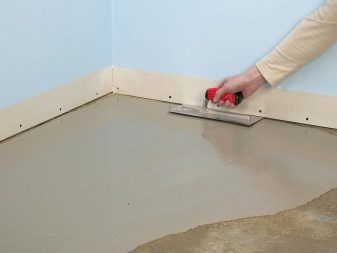
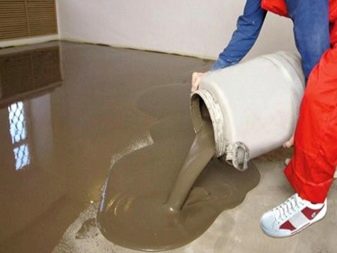
What it is?
Self-leveling floor mixes are produced in the form of a dry powder consisting of cement or gypsum, as well as fine sand, to which various plasticizers and fillers are additionally added, which accelerate the setting and improve the properties of the mortar. In addition, granular filler, glue and coloring pigments can be contained. This powder is diluted with water to the consistency of liquid sour cream.

A layer of leveling compound spreads over the surface, fills all small cracks and pits, has excellent adhesion and, after drying, becomes perfectly even, strictly horizontal in level and rigid. These are the characteristics that are needed for the subsequent laying of tiles, parquet, laminate and other types of decorative floors.
Bulk compounds are used in construction and repair in all types of premises, including industrial and office ones. Can be applied on concrete, cement-sand or anhydrite rough screeds. Drying and strength gain occurs within a day. The self-leveling floor is not used as an independent decorative coating, only as a base floor, because it is necessary to put the finishing material on top of it.

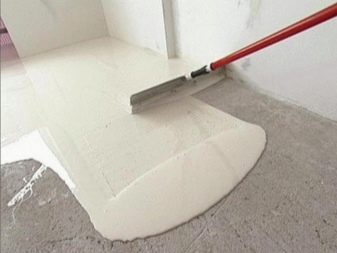
The cost of a self-leveling mixture is quite affordable even with a low-budget repair. Manufacturers indicate the service life on the packaging - it varies from 30 to 50 years, which is an excellent alternative to a simple concrete screed.
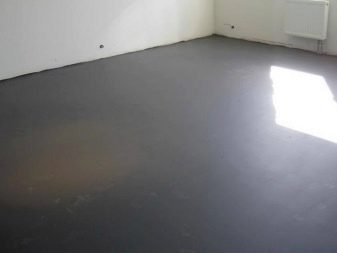
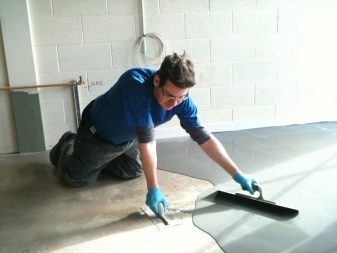
Rovnitel can be used for various purposes, depending on this, a composition of different properties is needed.
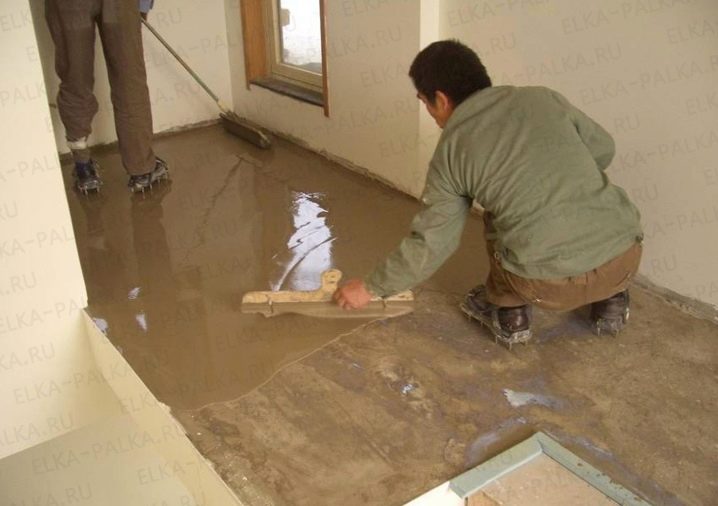
Advantages and disadvantages
Self-leveling compound has a number of advantages over other leveling methods:
- due to its flow properties, the solution spreads itself over the surface and requires only a small corrective movement;
- subject to all the intricacies of the technological process, the floor is very durable and wear-resistant, takes significant loads without deformation;
- the preparation of the solution is very simple: you just need to fill it with water and stir;
- does not require the setting of special beacons to control the level;
- very quickly gains the design strength and dries;

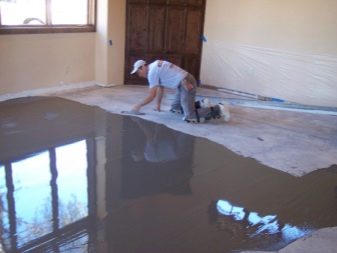
- does not require additional reinforcement with special meshes or fibers;
- does not allow moisture and water to pass through, non-flammable;
- abrasion resistant, not scratched;
- a wide range of manufacturers and materials presented on the construction market;
- acts as an additional sound insulator: the thicker the layer, the better its properties are manifested;
- the equalizer significantly reduces heat loss indicators;
- can be used in unheated rooms, frost-resistant.
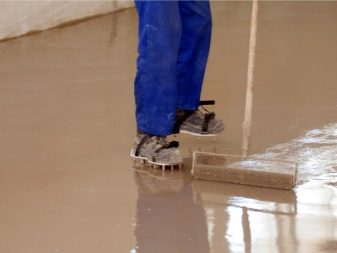
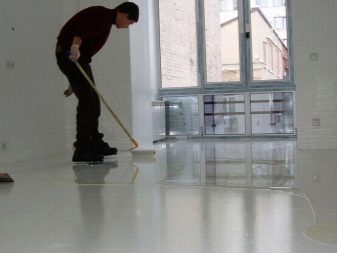
There are also minor disadvantages:
- in case of violation of the laying technology and the drying regime, cracks may form on the surface of the layer;
- if a decision is made to replace the self-leveling floor, then you will have to dismantle it together with the base;
- if the thickness is calculated incorrectly, and the layer is too thin, then its strength is significantly reduced;
- the liquid consistency of the bulk mixtures does not allow, if necessary, to mount the screed with a slope;
- it is not recommended to exceed the thickness specified in the instructions: the maximum criterion is 50 mm, and the recommended indicator varies from 1 to 10 mm.
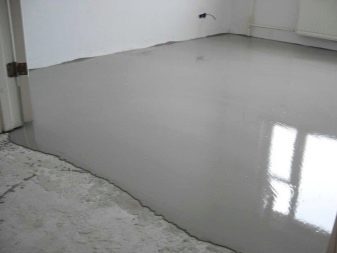
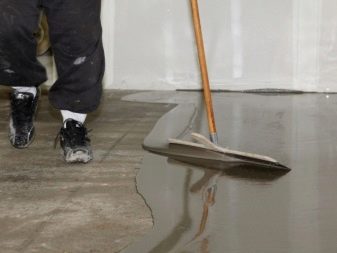
Views
All materials for self-leveling floors are divided into two large subgroups:
- The first group is made on the basis of cement. This material can be used both in the bathroom and in the living room, as well as in rooms with any humidity indicators. The thickness of the cement layer is allowed from 2 to 5 cm. Such floors are more expensive than gypsum, but stronger and more durable. The dry mixture is diluted with water according to the instructions.

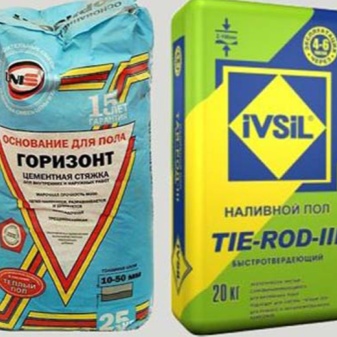
- The second group, the so-called anhydride, is based on gypsum. This material costs less, but its use in rooms with high humidity levels is impractical, since it absorbs water and swells at the same time. It dries quickly, can be laid up to 100 mm thick, but if the filling layer is more than 5 cm thick, it will take longer to dry. Anhydrite mixtures are less in weight than cement ones, therefore they have less load on the base. Self-leveling mixture based on gypsum allows you to level the base for the underfloor heating system, distributes and retains heat well.
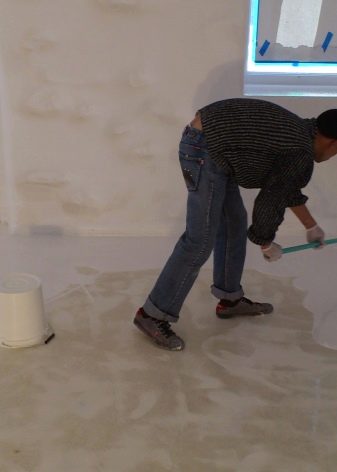
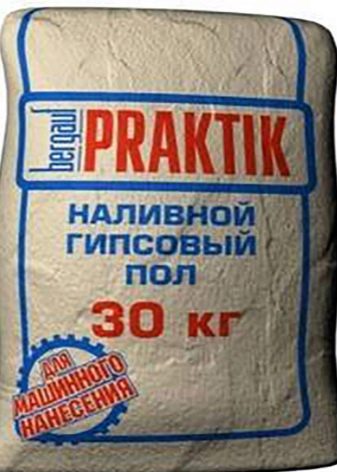
There are also special leveling agents with polymerizing binders.
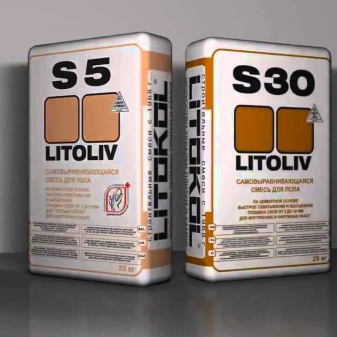
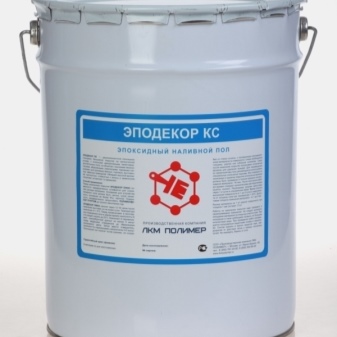
Epoxy Levels, which contain epoxy resins, give it low fluidity and plasticity. Such material perfectly tolerates loads, is waterproof, has high hardness and rigidity, does not pass or absorb water, does not react with chemically aggressive substances. Due to these features, it is used in rooms with high humidity or in chemical production workshops.
Polyurethane compounds They are distinguished by high rates of elasticity and flexibility, are affordable and frost-resistant. Recommended for use in shopping centers, offices of organizations where there is a large traffic.
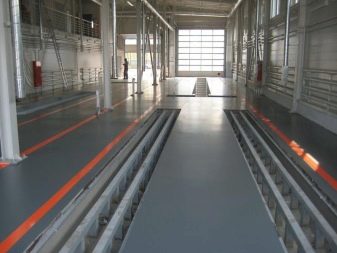
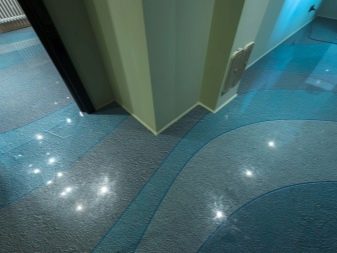
Epoxy-polyurethane self-leveling mixtures have the properties of both epoxy and polyurethane floors. This material works great under extreme loads, for example, in the subway, at train stations, at airports.
Cement-acrylic the floors are suitable for swimming pools, saunas, corridors, halls due to their rough surface. These mixes contain acrylic.
Fast hardening floors, methyl methacrylate. Such a floor is applied in a layer of any thickness; it very quickly gains its design strength and dries out. This material is indispensable when you need to do everything very quickly and smoothly. When pouring, it smells very harsh, but the smell quickly disappears.

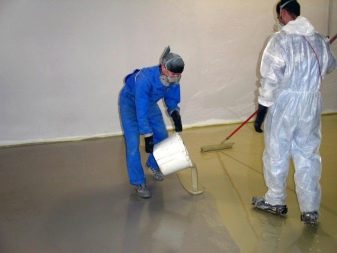
Repairing compound for wood floors. This solution contains a special additive in the form of fibers, which adheres perfectly to the wooden base.
Transparent polymer floorsconsisting of a polymer and a hardener. The liquid solution is poured onto a perfectly even plaster and putty base. Patterned floors are installed in two layers, the top layer is transparent. A three-dimensional banner film, shells, colored sand and other decorative elements are laid between the layers.
These floors look amazing and are used as a topcoat in homes, apartments, hotels, restaurants, art galleries - wherever interesting and original flooring is needed. This is a real decoration for any interior.
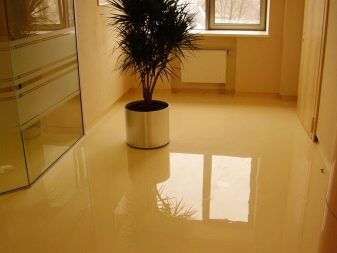
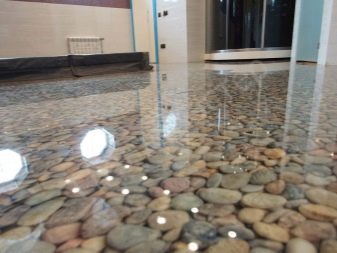
Depending on the grain size of the additives, leveling compounds are divided into rough and finishing:
- Coarse mixtures contain components of larger fractions, such as sand, crushed stone, crushed granite, expanded clay. Therefore, the surface of the layer is uneven. The high density prevents the solution from spreading over the surface, because of this, it must be leveled with a rule.Such dopants are used to fill chips, holes, height differences, deep cracks in rough foundations. The permissible fill thickness varies from 1 to 8 cm.
- Finishing compounds have a thinner structure, have significant fluidity and plasticity. The finishing layer is thinner, it evens out only minor differences in height, it perfectly penetrates into all cracks and voids. The surface of such a floor after hardening becomes absolutely smooth and even.
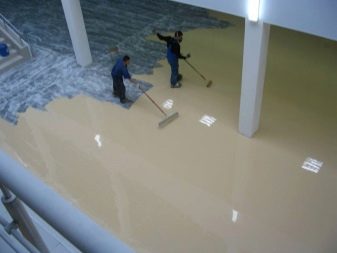
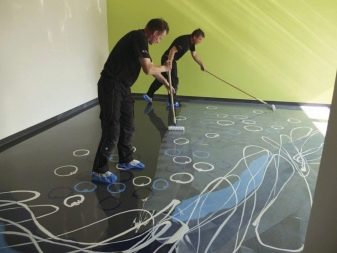
Criterias of choice
Manufacturers offer a huge selection of different levels designed for different purposes and types of premises, differing in composition and technical characteristics.
In order to choose the right leveling agent, it is necessary to consider some important points:
- The type of building under construction, the planned loads and the specifics of the operating conditions, for example, a swimming pool, a workshop at a chemical plant, a hotel, an apartment. In an apartment and with light loads, you can use less durable levels.
- The purpose of pouring the self-leveling floor. Coarse coarse-grained solutions are used for roughing, and fine finishing solutions for finishing.
- The surface condition of the original base. To compensate for severe irregularities and pits, cracks and chips, it is necessary to select levelers with the possibility of laying in a thicker layer.
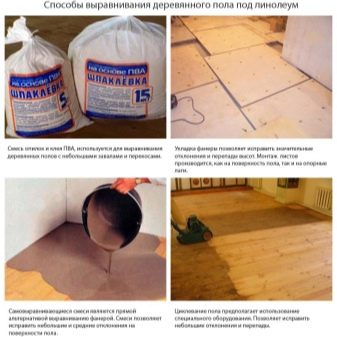
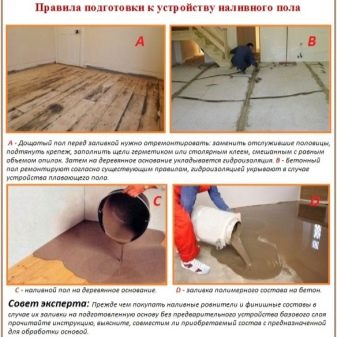
- For a wooden base, you should buy a special compound.
- The complete curing time differs for different types of self-leveling floors: for standard floors - 30 minutes, for quick-drying floors - 15 minutes. Therefore, it is recommended to carry out pouring work with assistants: you need to distribute the work so as to keep within the estimated time.
- The cost of self-leveling floors differs in the amount of plasticizing additives. If the budget allows, then it is better to choose a more expensive and high-quality version of a well-known brand.
- For the underfloor heating system, special compounds with increased thermal insulation properties are produced.
- The expiration date must be observed, it is indicated on the package.
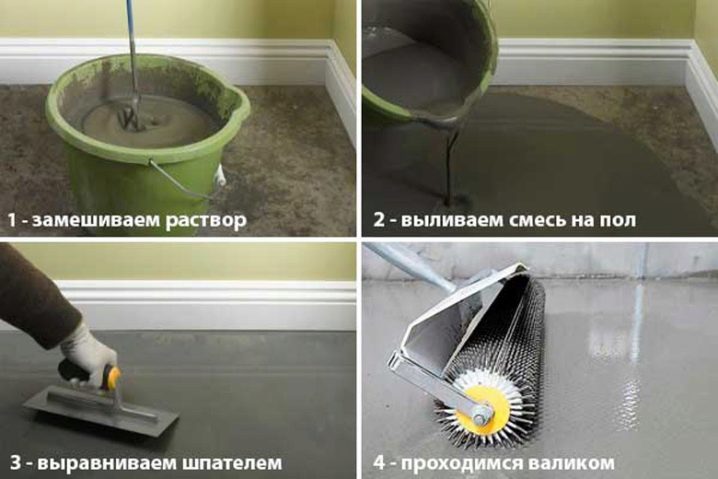
Self-leveling dry materials are sold in 25 kg paper bags. To calculate the amount required for the purchase, you need to find out the consumption of the mixture per 1 sq. m and determine the planned thickness of the finishing coating. On the packaging of the leveling agent there is an instruction on the consumption of the mortar per 1 m2 with a layer thickness of 1 mm. As a rule, these figures vary for thin levels from 1.5 to 1.7 kg, and for starting levels - from 2 to 2.5 kg.
The height is calculated from the highest point of the floor to the depth of the largest recess, then the required thickness of the floor layer is added. The height is multiplied by the size of the area - as a result, the volume of material is obtained, which must be multiplied by the flow rate of the solution. Bags of 25 kg, which means that the result should be divided by 25. The number of bags has been determined. This is an approximate calculation, to which experts recommend adding 10% for unforeseen expenses.
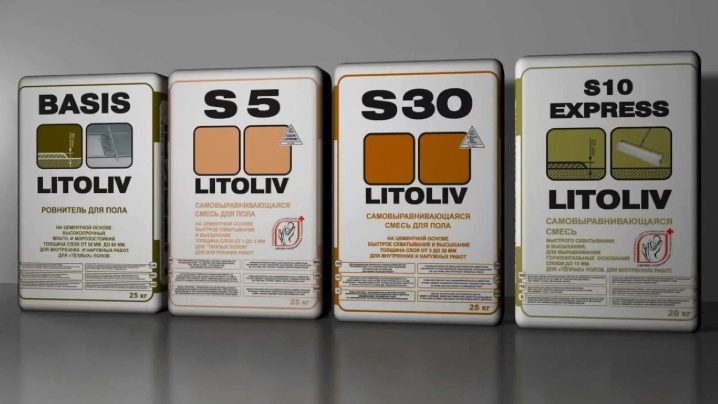
In the case of an uneven base with significant defects, a multi-layer application of a self-leveling mixture is used. The bottom layer is made with a coarser material, and the top one is finished. If the repair takes place in an apartment, then rooms should be divided into dry and high-humidity rooms (kitchen, bathroom, toilet) and calculate the consumption separately, since different materials will be bought: for dry - anhydrous, for wet - cement.
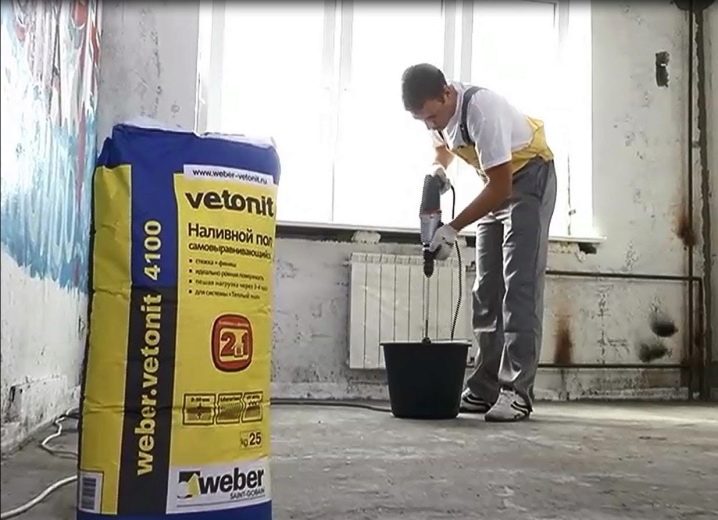
Subtleties of application
To work, you will need the following tools and materials:
- clean water to add to dry powder;
- construction mixer or drill with a nozzle for mixing the solution;
- level, laser or normal;
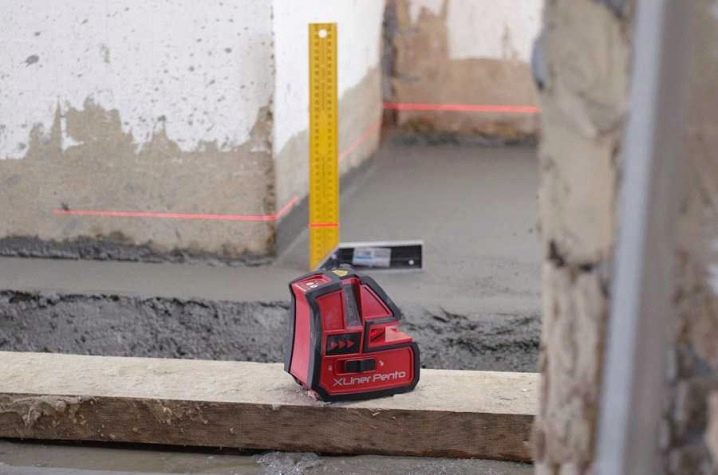
- a spatula for covering cracks and holes;
- acrylic based primer emulsion;
- needle roller to correct spreading and remove air bubbles;
- a rule and a notched trowel for leveling rough compounds.

The technology of leveling the floor with your own hands in an apartment, house or other room by pouring a self-leveling mixture occurs in several stages and begins with the preparation of a rough coating.
It should not be too cold in the room, otherwise the self-spreading of the equalizer will be disturbed. The temperature is desirable within + 10 degrees. It is better to fill it with two or three people in order to have time before the moment of solidification.
First you need to clean the surface of the base from debris, dirt and dust. It is best to remove dust with a vacuum cleaner, then mop and dry the floor. Wipe off oil stains and various chemicals and detergents. Carefully cover up all potholes, crevices, cracks and large differences in height over 80 mm. You should get a dry, clean and relatively even rough screed without large visible defects.
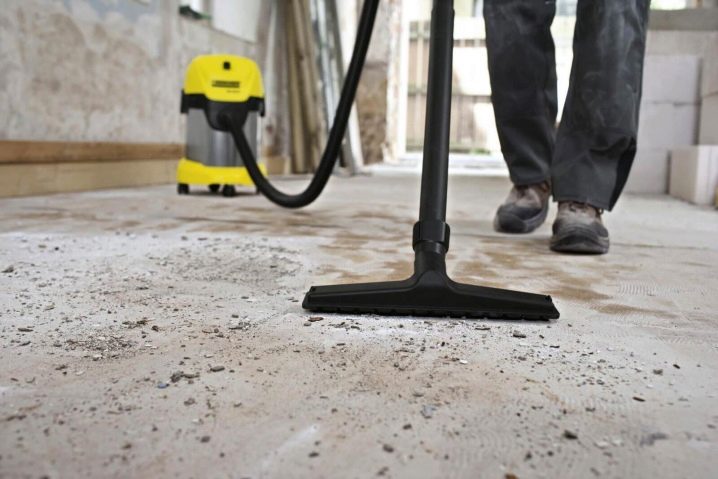
For better adhesion, it is necessary to prime the base with an acrylic primer, which consolidates microcracks in the screed, improves spreading, adhesion and reduces material consumption. It should be primed in two layers. To apply the second layer, you need to dry the first one. For porous surfaces, special strengthening emulsions are produced.
When the self-leveling layer solidifies and the temperature and humidity change, the volume expands and the load on the walls increases. In this case, floor cracking and even deformation of structural elements are possible.
To prevent the floor from collapsing and to compensate for the loads, it is customary to use a damper tape. It runs along the bottom edge of the wall and is often provided with an adhesive strip for easier installation. Such a tape is also used for laying seams at joints when dividing large areas of the screed into sections. The finishing leveler requires preliminary installation of a waterproofing layer or impregnation.
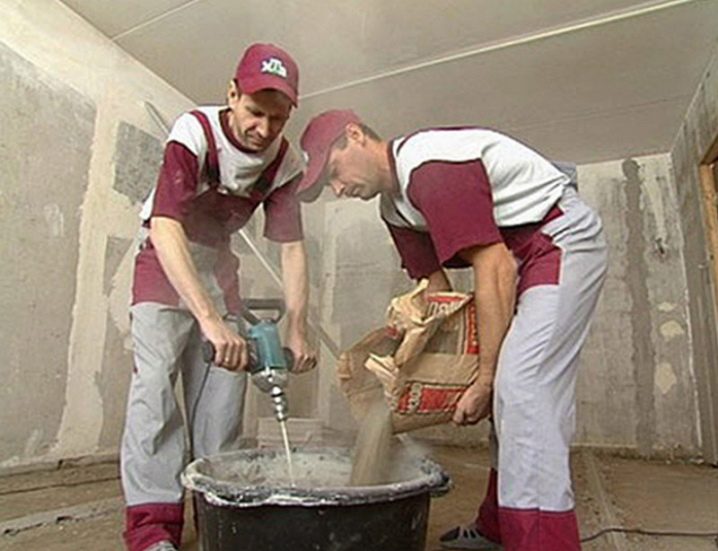
The base is prepared, now you can mix the solution. Pour dry powder into a clean container with water at room temperature, stirring until smooth with a mixer at low speeds. Violation of the proportions specified in the instructions, or excess water threatens foaming of the finished solution and violation of the integrity of the structure. The finished composition hardens very quickly, so it cannot be stored. Pour a portion from the corner of the room, moving towards the exit, if necessary, you can additionally level the floor with a notched trowel or a rule.
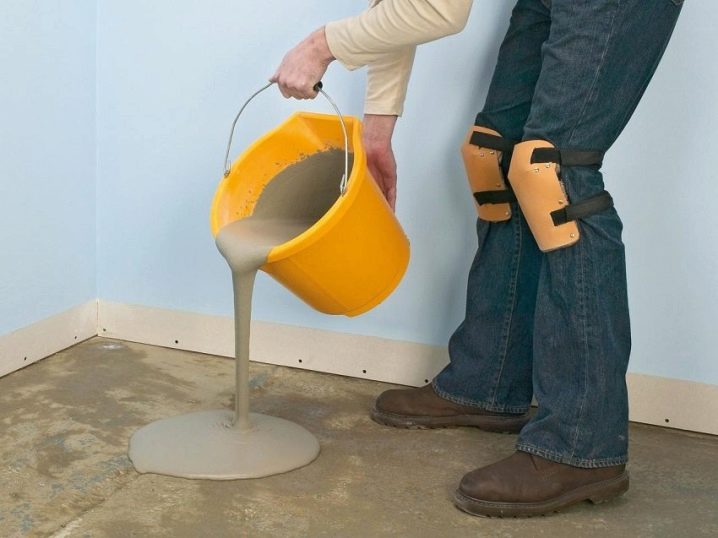
Manufacturers and reviews
In the building materials market, there is tough competition between manufacturers of dry mixes for self-leveling floors. Large companies are working on the entire line of types of mixtures for various conditions of use, provide certificates for their products, give detailed instructions and recommendations from full-time specialists, collect feedback from masters and study customer demand in order to increase their rating to improve the quality of materials. The most popular and known to consumers are the following brands:
- Knauf company renowned for its high quality and rich assortment of manufactured rovers. The specially developed composition of the Boden line, based on refined gypsum, quartz sand and polymer additives, increases the strength of the floor by 50% compared to concrete floors. Can be used for warm floors, dries quickly. Users note the high quality of the products and the possibility of using them for underfloor heating.
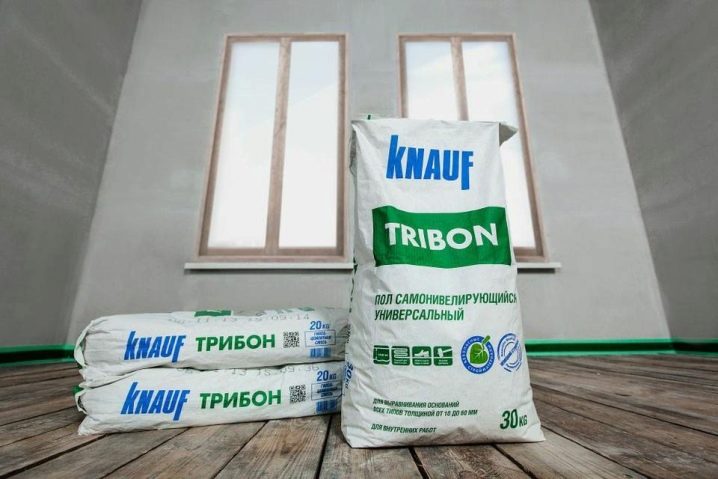
- Products "Vetonit" contains special additives that accelerate the spreading of the solution and drying without deformation. An excellent choice for experienced builders. The composition dries for 24 hours. This material is not painted or sanded or used as a finishing coat for floors. Consumer reviews indicate that the products of this brand are worthy of attention: the mixture really dries quickly, but when applied to a damp surface, it can start to smell unpleasant.

- Bolars mixes are characterized by consistently high quality of their products and a price affordable for a wide consumer.Excellent customer reviews receive thin finish matrices that instantly harden and create a perfectly even coating. An excellent solution for arranging underfloor heating systems. Imported polymer additives allow you to level the floors in basements, garages, damp rooms.
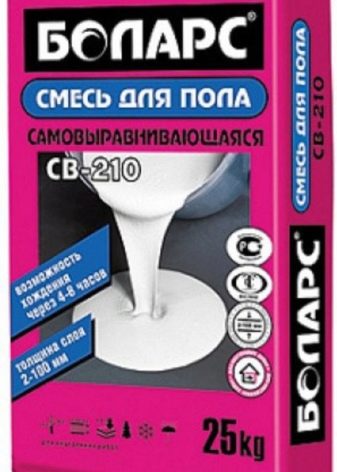
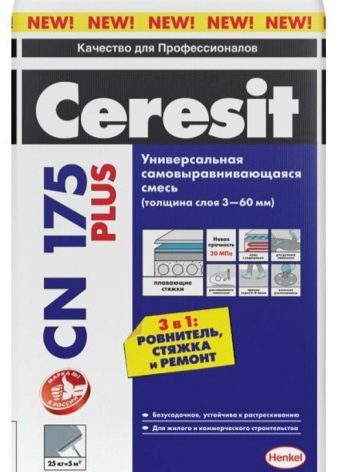
- Equalizers "Ceresit" are very popular in Russia and are used for any floors: concrete, wood, cement. They produce coarse-grained dry mixes, as well as special self-leveling compositions for rooms with increased loads during operation. Users distinguish this product as a high-quality and inexpensive product that has many advantages over analogues.
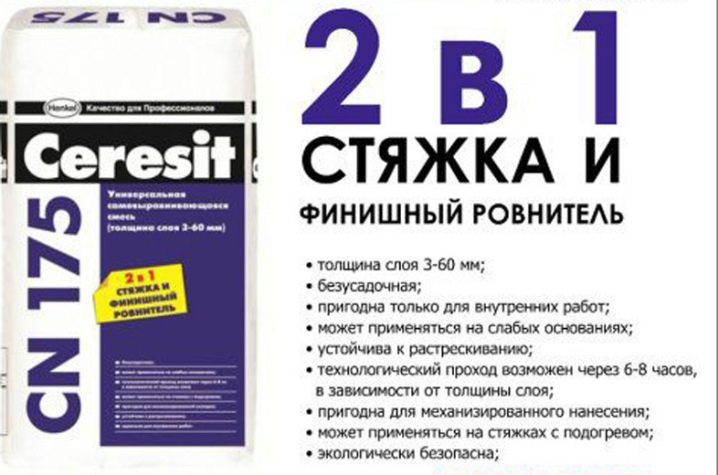
The use of high-quality factory certified self-leveling mixtures and adherence to technology will allow you to get a durable, durable and even floor in a short time.
How to level the floor using a self-leveling mixture, see the next video.













The comment was sent successfully.